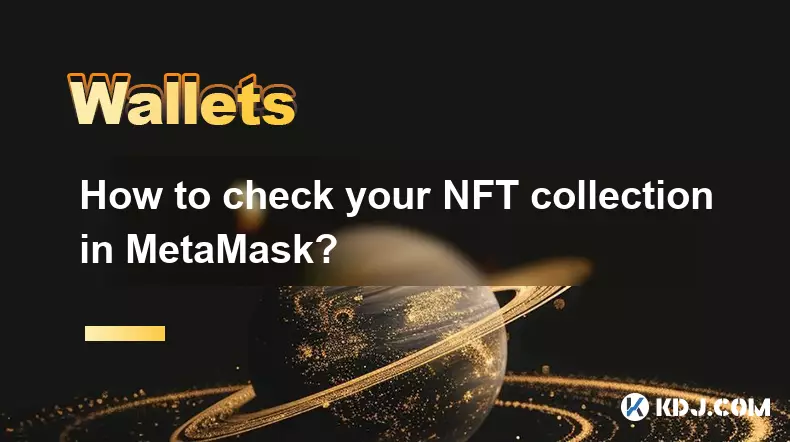-
 bitcoin
bitcoin $103128.103252 USD
-3.33% -
 ethereum
ethereum $3437.127692 USD
-4.86% -
 tether
tether $0.999700 USD
-0.02% -
 xrp
xrp $2.403993 USD
-5.73% -
 bnb
bnb $961.374676 USD
-4.11% -
 solana
solana $154.938665 USD
-8.18% -
 usd-coin
usd-coin $1.000113 USD
0.03% -
 tron
tron $0.298122 USD
0.30% -
 dogecoin
dogecoin $0.172428 USD
-5.76% -
 cardano
cardano $0.557625 USD
-7.13% -
 hyperliquid
hyperliquid $38.740701 USD
-6.51% -
 chainlink
chainlink $15.306051 USD
-7.51% -
 bitcoin-cash
bitcoin-cash $507.558648 USD
-3.26% -
 stellar
stellar $0.281899 USD
-6.74% -
 unus-sed-leo
unus-sed-leo $9.241811 USD
0.57%
Phishing Attack Prevention: Safeguarding Your Crypto Wallet Credentials
Always verify URLs manually and never share your seed phrase—legitimate services won’t ask for it. Use hardware wallets and 2FA for maximum security.
Nov 03, 2025 at 06:18 am

Understanding Phishing Tactics in the Crypto Space
1. Cybercriminals frequently use fake websites that closely resemble legitimate crypto exchanges or wallet platforms. These sites are designed to capture login credentials and private keys the moment users enter them.
2. Fraudulent emails mimicking official communications from well-known blockchain services often contain malicious links. These messages create a sense of urgency, prompting users to act without verifying authenticity.
3. Impersonation attacks on social media are increasingly common. Scammers pose as support agents or project team members, requesting sensitive information under the guise of account recovery or verification.
4. Some phishing attempts exploit DNS vulnerabilities to redirect users from genuine domains to cloned versions. This method is particularly dangerous because the URL may appear correct at first glance.
5. Malware-laced apps disguised as wallet tools can harvest keystrokes or clipboard data, automatically replacing copied wallet addresses with those controlled by attackers.
Essential Security Practices for Wallet Protection
1. Always manually type the URL of your wallet or exchange platform instead of clicking on email or message links. Bookmark trusted sites to reduce the risk of accidental redirection.
2. Enable two-factor authentication (2FA) using an authenticator app rather than SMS, which is vulnerable to SIM-swapping attacks.
3. Regularly update wallet software and operating systems to ensure known security flaws are patched promptly.
4. Store recovery phrases offline in a secure location such as a fireproof safe. Never save them digitally or share them via any communication channel.
5. Use hardware wallets for storing significant amounts of cryptocurrency. These devices keep private keys isolated from internet-connected environments, drastically reducing exposure to online threats.
Recognizing and Responding to Suspicious Activity
1. Monitor login notifications and transaction histories frequently. Unexpected activity should trigger immediate investigation and credential changes.
2. If you encounter a suspicious site, close the browser tab immediately and report the domain to relevant authorities or blockchain security firms.
3. Forward phishing emails to the official abuse contact of the impersonated service. Many platforms maintain dedicated channels for reporting fraudulent content.
4. In case of compromised credentials, transfer remaining funds to a new wallet generated from a clean device after revoking API keys and disconnecting third-party integrations.
5. Never interact with pop-ups claiming your wallet is compromised or needs urgent updates. Legitimate services do not issue warnings through browser overlays.
Frequently Asked Questions
What should I do if I accidentally entered my seed phrase on a phishing site?Immediately stop using the affected wallet. Transfer all assets to a newly created wallet using a secure, uncompromised device. Assume the original keys are exposed and never reuse them.
How can I verify the authenticity of a crypto support representative?Official support teams will never ask for your private key or seed phrase. Confirm identities through verified channels listed on the project’s official website and avoid engaging with unsolicited contacts.
Are mobile wallet apps safe from phishing attacks?While mobile apps reduce exposure to certain web-based scams, they are not immune. Only download wallets from official app stores and check developer names against the project’s documentation.
Can antivirus software protect me from crypto phishing?Antivirus programs can detect known malware and block some malicious domains, but they cannot prevent all phishing attempts. User vigilance remains the most effective defense layer.
Disclaimer:info@kdj.com
The information provided is not trading advice. kdj.com does not assume any responsibility for any investments made based on the information provided in this article. Cryptocurrencies are highly volatile and it is highly recommended that you invest with caution after thorough research!
If you believe that the content used on this website infringes your copyright, please contact us immediately (info@kdj.com) and we will delete it promptly.
- DESK Token, Tokenized Real Estate, and Venture Hub: A New Era in Digital Assets
- 2025-11-12 16:55:02
- JPM Coin, Blockchain, and Public Tokens: The Future of Institutional Finance?
- 2025-11-12 17:10:00
- Ethereum's Whale Watch: Upgrade Incoming!
- 2025-11-12 17:10:00
- DOGE: Analyzing the Price and Potential – Will Dogecoin Reach $1?
- 2025-11-12 17:10:02
- JPMD, USD Token, and Base Network: JPMorgan's Blockchain Leap
- 2025-11-12 17:10:02
- Treasury Plays Evolve: Beyond MSTR with Blockchain Engineering
- 2025-11-12 17:20:01
Related knowledge

Why is MetaMask asking for a signature?
Nov 10,2025 at 06:19pm
Understanding Signature Requests in MetaMaskMetaMask frequently prompts users to sign messages or transactions as part of its standard operation. Thes...

How to use MetaMask Portfolio to track assets?
Nov 08,2025 at 05:40am
Getting Started with MetaMask Portfolio1. Download and install the MetaMask mobile app from the App Store or Google Play. Open the app and select 'Imp...

MetaMask not popping up: how to fix this issue?
Nov 10,2025 at 05:59am
Understanding the MetaMask Pop-Up Issue1. MetaMask is one of the most widely used cryptocurrency wallets, especially for interacting with decentralize...

How to send ETH from Binance to MetaMask?
Nov 10,2025 at 04:40am
Sending ETH from Binance to MetaMask: A Step-by-Step GuideTransferring Ethereum (ETH) from your Binance account to your MetaMask wallet is a common op...

How to check your NFT collection in MetaMask?
Nov 06,2025 at 08:20pm
Accessing Your NFTs in MetaMask Wallet1. Open the MetaMask browser extension or mobile app and ensure you are logged into your wallet account. Once in...

Why is the MetaMask swap feature failing?
Nov 06,2025 at 09:20pm
Understanding MetaMask Swap FailuresMetaMask, one of the most widely used cryptocurrency wallets, enables users to swap tokens directly within the int...

Why is MetaMask asking for a signature?
Nov 10,2025 at 06:19pm
Understanding Signature Requests in MetaMaskMetaMask frequently prompts users to sign messages or transactions as part of its standard operation. Thes...

How to use MetaMask Portfolio to track assets?
Nov 08,2025 at 05:40am
Getting Started with MetaMask Portfolio1. Download and install the MetaMask mobile app from the App Store or Google Play. Open the app and select 'Imp...

MetaMask not popping up: how to fix this issue?
Nov 10,2025 at 05:59am
Understanding the MetaMask Pop-Up Issue1. MetaMask is one of the most widely used cryptocurrency wallets, especially for interacting with decentralize...

How to send ETH from Binance to MetaMask?
Nov 10,2025 at 04:40am
Sending ETH from Binance to MetaMask: A Step-by-Step GuideTransferring Ethereum (ETH) from your Binance account to your MetaMask wallet is a common op...

How to check your NFT collection in MetaMask?
Nov 06,2025 at 08:20pm
Accessing Your NFTs in MetaMask Wallet1. Open the MetaMask browser extension or mobile app and ensure you are logged into your wallet account. Once in...

Why is the MetaMask swap feature failing?
Nov 06,2025 at 09:20pm
Understanding MetaMask Swap FailuresMetaMask, one of the most widely used cryptocurrency wallets, enables users to swap tokens directly within the int...
See all articles


























![[4K 60fps] no care by crashpancake2 (1 Coin) [4K 60fps] no care by crashpancake2 (1 Coin)](/uploads/2025/11/12/cryptocurrencies-news/videos/6913a8862890b_image_500_375.webp)















































